| Trygve.Com > Images > the Servers' Quarters | Translate this page:
|
|
|
|
One of the other advantages of having the hardware and software match on most of the machines is that they're already configured to be able to take over for one of the others in case it goes down or were to get overloaded.
There may be a magical power exerted just by keeping spares lying around and ready to go, because as long as I'm ready to replace something that goes down ... it doesn't. The only semi-exception has been a few of the older Sun servers which began exhibiting sporadic memory errors after several years of continuous duty. It may just be that, by seeing those spares all ready to go, the components in question realize that they can't get any extra attention by misbehaving, they'll only get a "time out." |
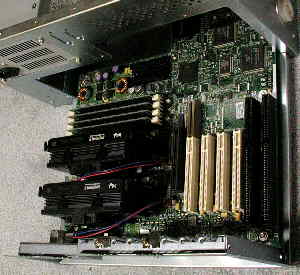
|
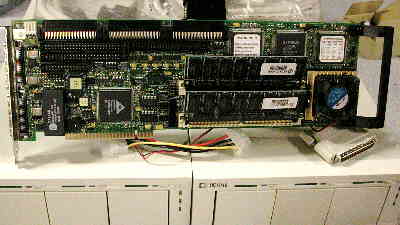
|
|

|
The same basic layout and partitioning scheme is needed for mail servers, ftp servers, web servers, etc., and the functions which are not active on one machine (usually that's all but one of the above) are simply turned off. Copies of the individual websites, etc., can be maintained on the other machines where they would be used if that server were performing that function, serving both as "backups" and "fallbacks." |
|
The server area is on one end of the gym, which seems an appropriate location. Both involve a fair amount of "heavy iron" and the sound of the hard drives and fans is unlikely to be bothersome when one is in the middle of a set. |

|
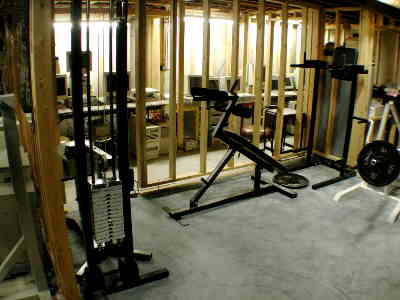
|
Along this wall are most of the Nyx login machines, the Nyx user webserver, mailserver, DNS, and the two news machines, which are the two most powerful machines down here. |
|
Dialup lines are handled through a 48-line US Robotics Total Control digital modem bank, feeding the Xylogics (aka Bay Networks, aka Nortel) Remote Annex 4000 remote access server, while the Cisco 2524 modular router handles the traffic going from here to the internet backbone. |
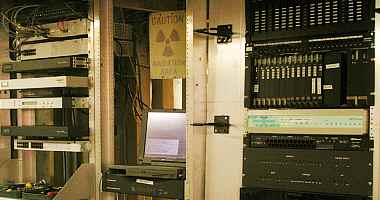
|
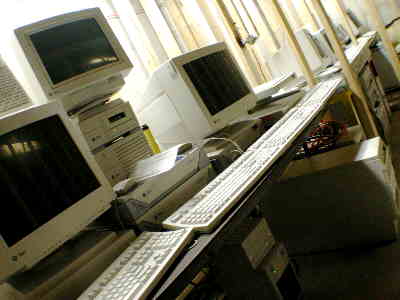
|
Underneath the two tables at the ends and scattered throughout the servers, are the backup power supplies. More than a dozen in total, together they weigh as much as a car and their combined rating exceeds 18.5KVA. The big ones were especially fun to move down the stairs. I don't know exactly how long the machines would run off the batteries if the power were cut off entirely, but certainly more than long enough for the backup generator to kick in. |
|
Like everything else in these parts, the server room is always a "work in progress"; I still have plenty of things on the to-do list. One of these days I really will get the microwave relays going to supplement the land lines. Even though it's all new fiber between here and the internet "backbone" and reliability has been very good, maintaining multiple connection paths to the rest of the internet is just good practice. That may wait a bit longer on the "get around to it eventually" list; I still have software and hardware upgrades waiting in the wings for Nyx's login machines that should get rolled into place first. |
|